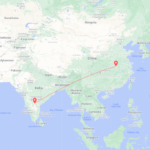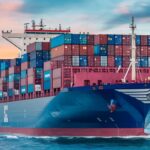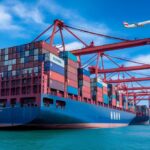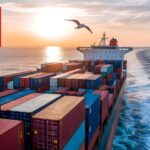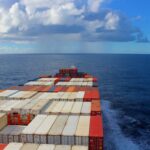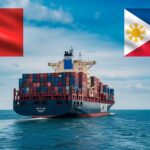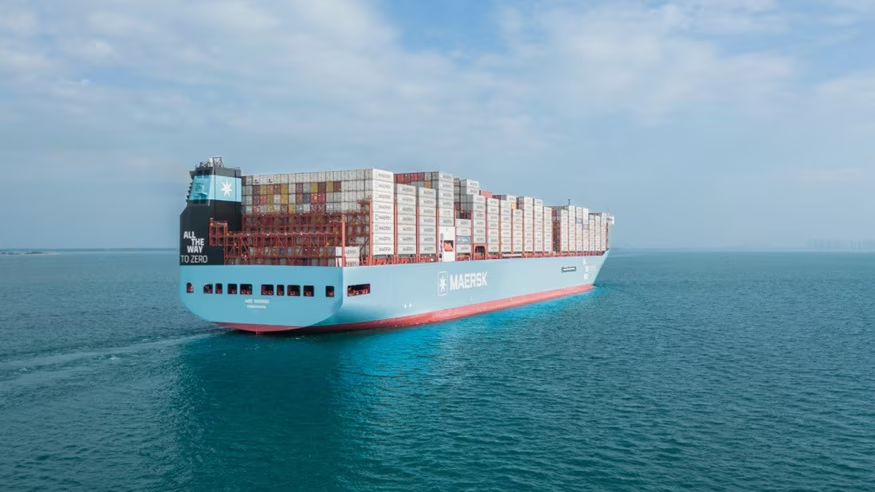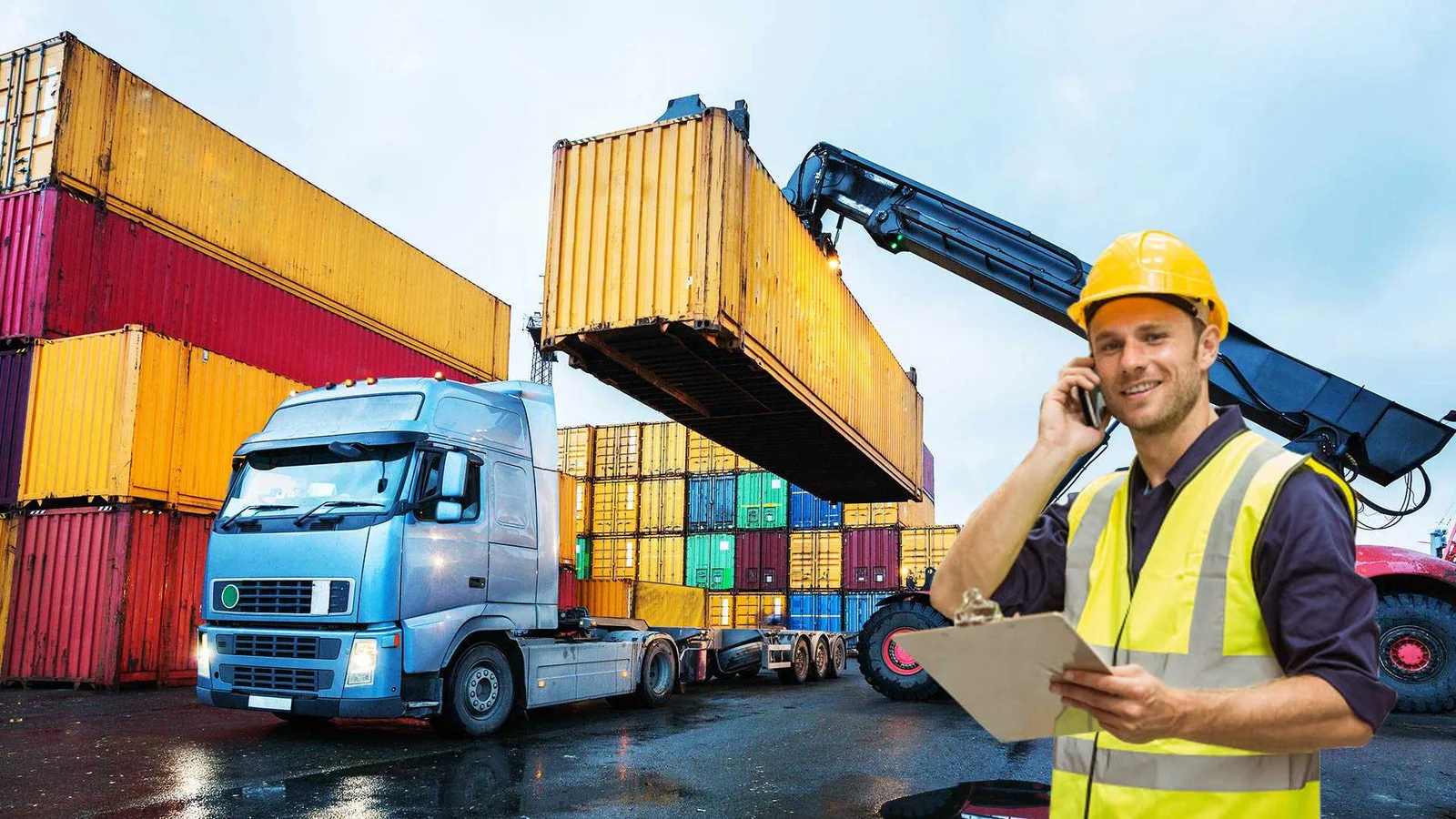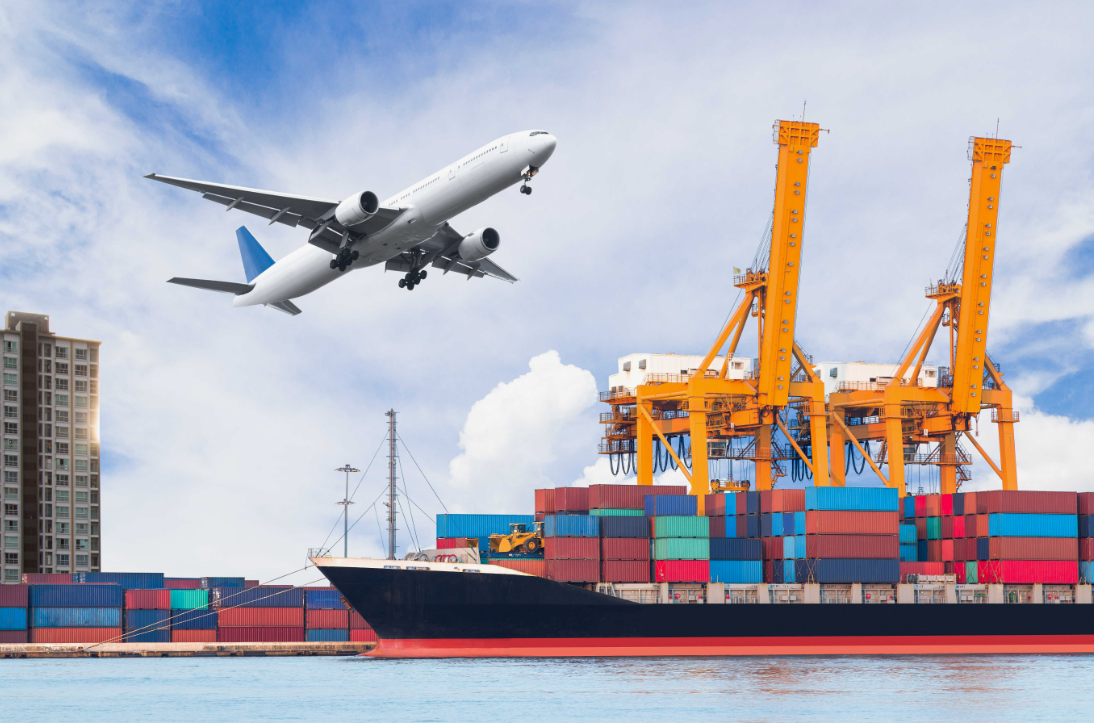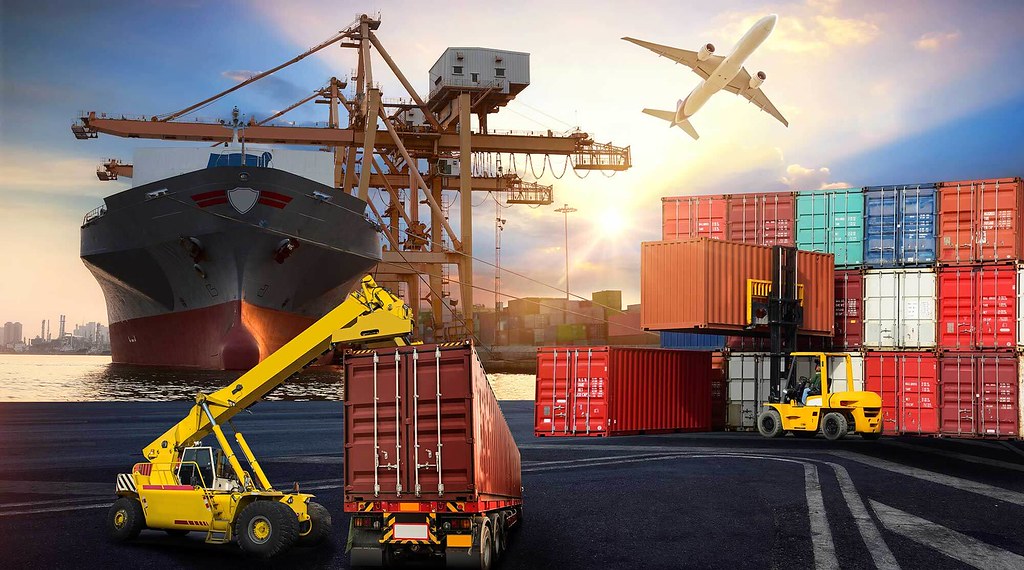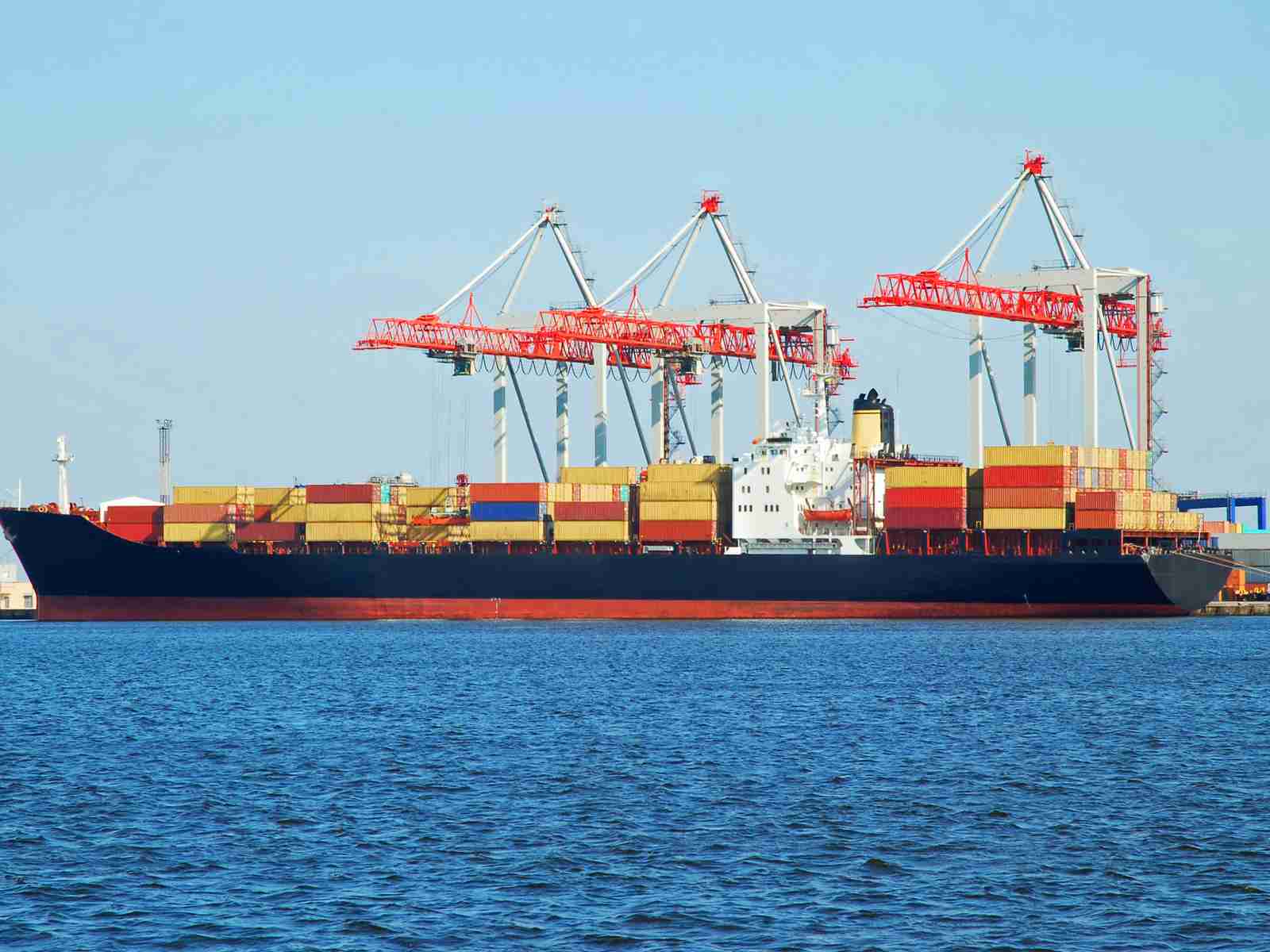The trade relationship between China and India has flourished into one of Asia’s most significant bilateral partnerships, with trade reaching approximately $125 billion in 2022. This robust relationship drives a growing demand for a variety of products, from electronics to textiles, necessitating efficient logistics solutions. Sea freight has emerged as a preferred method for transporting goods in bulk, offering cost-effectiveness and the capacity to accommodate large and oversized cargo. The extensive network of Chinese seaports, coupled with the strategic positioning of Indian ports, enhances connectivity and facilitates smooth trade flows. Understanding the nuances of sea freight options, such as Full Container Load (FCL) and Less-than-Container Load (LCL) shipping, is crucial for businesses looking to optimize their import processes. This guide will explore the essential aspects of sea freight shipping from China to India, including shipping options, key ports, and best practices for successful logistics management.
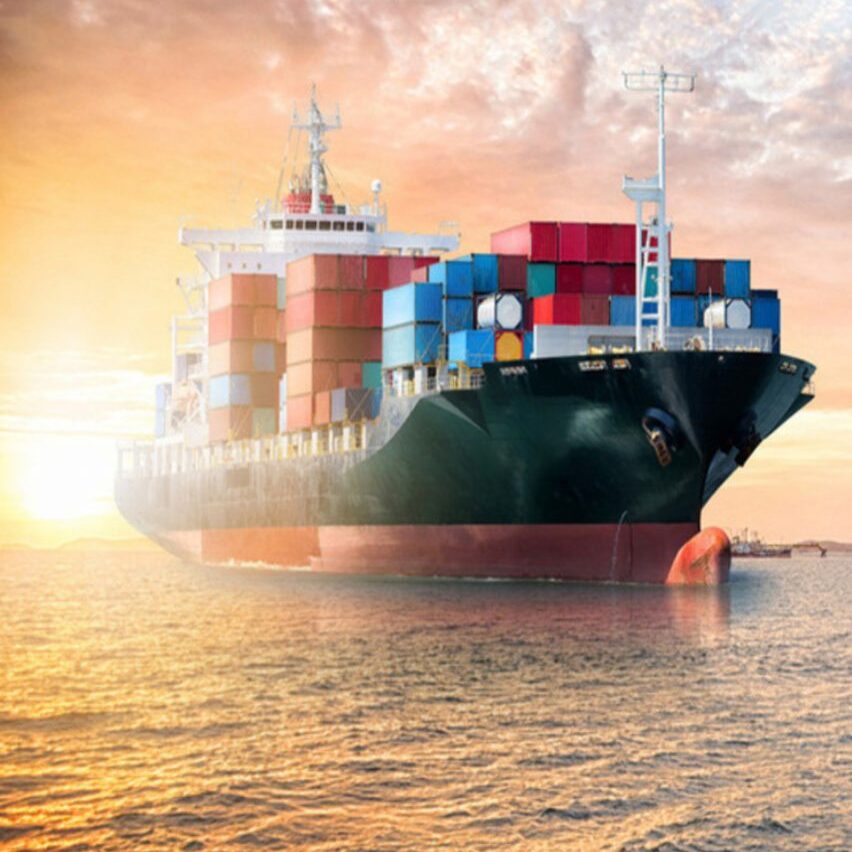
Understanding Sea Freight Options
When considering sea freight, it’s essential to understand the different shipping options available, primarily Full Container Load (FCL) and Less-than-Container Load (LCL). Each method has its unique advantages and considerations, allowing businesses to choose the most suitable approach based on their specific shipping needs.
Full Container Load (FCL) Shipping
FCL shipping involves the exclusive use of an entire shipping container for transporting goods. This option is particularly beneficial for businesses with large volumes of cargo.
- Benefits of FCL Shipping:
- Cost Efficiency: When shipping large quantities, FCL can be more economical than LCL, as fixed costs are spread over a larger volume of goods.
- Reduced Risk of Damage: With a dedicated container, the risk of damage due to handling is minimized. Cargo does not share space with goods from other suppliers, reducing the chance of contamination or loss.
- Faster Transit Times: FCL shipments often receive priority in loading and unloading, leading to quicker turnaround times. This is particularly advantageous for time-sensitive shipments.
- Factors Affecting FCL Shipping Costs:
- Container Size: Standard container sizes are typically 20-foot and 40-foot containers. Choosing the appropriate size based on the volume of goods can impact cost.
- Shipping Routes: Costs may vary depending on the chosen shipping route and the specific port of origin and destination.
- Fuel Prices: Fluctuating fuel costs can directly influence the total cost of shipping, making it essential to consider this variable when budgeting.
Less-than-Container Load (LCL) Shipping
LCL shipping is ideal for businesses that do not have enough cargo to fill an entire container. This option allows multiple suppliers to share a single container, making it a flexible solution for smaller shipments.
- Advantages of LCL Shipping:
- Flexible Volume: Importers can ship smaller quantities without the need to commit to a full container, allowing for greater flexibility in managing inventory.
- Cost-effective for Small Shipments: Although LCL can be more expensive per unit than FCL shipping, it allows businesses with smaller volumes to access international markets without the high upfront costs of filling an entire container.
- Reduced Inventory Costs: Businesses can send goods as needed, minimizing the need for large inventory storage, which can be beneficial for cash flow management.
- Considerations for LCL Shipping:
- Longer Transit Times: Since LCL shipments involve consolidating cargo from multiple suppliers, transit times may be longer compared to FCL shipments.
- Risk of Damage: As cargo is handled more frequently during consolidation and deconsolidation, there is an increased risk of damage or loss.
- Minimum Charge: LCL shipments usually come with a minimum charge, which means that even small shipments may incur higher costs compared to the expected rates.
In conclusion, understanding the distinctions between FCL and LCL shipping is crucial for businesses importing goods from China to India. Each method has unique benefits and considerations that can significantly impact logistics costs, shipping times, and overall efficiency. By partnering with a reputable freight forwarder such as Dantful International Logistics, businesses can navigate these complexities effectively, ensuring that their goods are delivered safely and on time. Dantful provides a comprehensive suite of services, including customs clearance, insurance services, and warehouse services, tailored to meet the diverse needs of global traders.
You may be interested in the following related articles:
- Shipping From China To Vietnam
- Shipping From China To Thailand
- Shipping From China To South Korea
- Shipping From China To Philipines
- Shipping From China To Pakistan
- Shipping From China To Japan
- Shipping From China To Indonesia
- Shipping From China To Singapore
- Shipping From China To Malaysia
Top Chinese Seaports for Exports to India
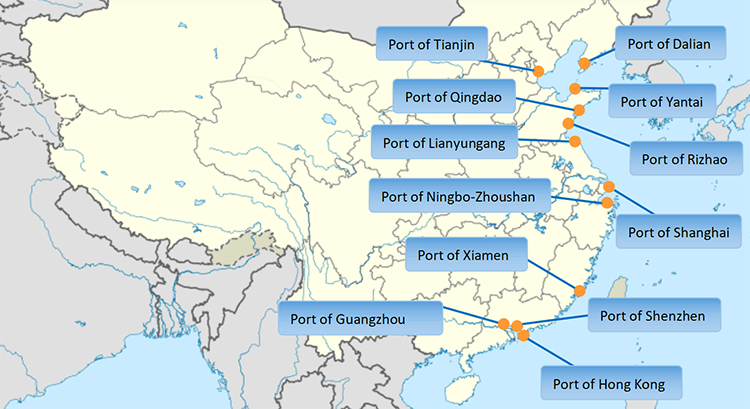
As one of the largest exporters in the world, China is home to several major seaports that facilitate the shipment of goods to various international markets, including India. Below are the top Chinese seaports crucial for exports to India:
1. Shanghai
Shanghai is the busiest seaport in the world and serves as a pivotal hub for international trade. The port’s significant capacity and advanced logistics infrastructure enable efficient handling of vast amounts of cargo destined for India. It is particularly noted for:
- Extensive Connectivity: Shanghai offers connections to numerous shipping routes, making it easily accessible for exporters.
- Modern Facilities: Equipped with sophisticated cargo handling facilities, Shanghai can accommodate large volumes of shipments efficiently.
- Diverse Cargo Types: From electronics to textiles, Shanghai handles a wide range of goods, facilitating smooth exports to Indian markets.
2. Shenzhen
Located in the south of China, Shenzhen is another critical seaport, known for its rapid growth and modernization. Key attributes include:
- High Export Volume: As a major manufacturing hub, Shenzhen exports a significant volume of goods, especially electronics and machinery, to India.
- Proximity to Hong Kong: Its strategic location near Hong Kong enhances its connectivity to international shipping lines.
- Advanced Technology: Shenzhen’s ports utilize cutting-edge technology to streamline operations, ensuring timely and efficient shipping.
3. Ningbo-Zhoushan
Ningbo-Zhoushan is a vital port known for its deep-water capacity, making it suitable for large vessels. Essential features include:
- Significant Cargo Handling: The port ranks among the top in terms of cargo tonnage, making it a reliable choice for exporters.
- Efficient Customs Clearance: Ningbo-Zhoushan boasts effective customs processes, reducing delays in shipping goods to India.
- Diversified Export Base: It supports a variety of goods, including industrial products and raw materials.
4. Guangzhou
The Guangzhou port serves as a significant trade route for goods moving from southern China to India. Its characteristics include:
- Strategic Location: Situated in the Pearl River Delta, Guangzhou facilitates easy access to international shipping lanes.
- Strong Logistics Network: The port has a well-established logistics framework, ensuring streamlined cargo handling and distribution.
- Versatile Cargo Types: Guangzhou exports a diverse array of products, making it an essential port for various industries.
5. Qingdao
Qingdao is renowned for its role in international trade and is strategically positioned along the Yellow Sea. Notable points include:
- High Capacity: Qingdao is one of the largest ports in northern China, capable of handling both containerized and bulk cargo.
- Strong Export Growth: It has experienced significant growth in exports, particularly in machinery and electronics.
- Excellent Infrastructure: Qingdao’s advanced infrastructure supports quick loading and unloading processes, enhancing shipping efficiency.
6. Tianjin
As one of the most important northern ports, Tianjin plays a crucial role in facilitating trade between China and India. Key aspects include:
- Access to Beijing: Its proximity to the capital city provides strategic advantages for exporters.
- Diverse Trade Activities: Tianjin handles various cargo types, including automobiles, chemicals, and consumer goods.
- Growing Export Volume: The port has seen a steady increase in export activities, solidifying its position in international trade.
Main India Seaports for Imports
India’s geographical diversity and economic growth have led to the establishment of several key seaports that play a vital role in facilitating imports from various countries, particularly China. Here are the main seaports in India for receiving imports:
1. Mumbai Port
Mumbai Port, located on the west coast, is one of the oldest and most significant ports in India. Its features include:
- Major Trade Hub: Handling a substantial portion of India’s cargo traffic, it is critical for importing goods from international markets.
- Comprehensive Facilities: Mumbai Port is equipped with modern facilities for container and bulk cargo, supporting a wide variety of imports.
- Strategic Location: Close to major industrial zones, enhancing the distribution of imported goods across the country.
2. Jawaharlal Nehru Port Trust (JNPT)
Also known as Nhava Sheva, JNPT is the largest container port in India, playing a pivotal role in the country’s import-export trade. Highlights include:
- High Container Capacity: It is specifically designed for handling containerized cargo, making it efficient for various imports.
- Excellent Connectivity: JNPT is well-connected to road and rail networks, ensuring seamless movement of goods to inland markets.
- Advanced Infrastructure: The port features state-of-the-art facilities that facilitate quick processing and customs clearance for incoming shipments.
3. Chennai Port
Chennai Port is the second-largest container port in India, located on the southeastern coast. Its advantages include:
- Diverse Import Range: The port handles various cargo types, including machinery, electronics, and textiles.
- Strong Logistics Network: Chennai Port’s logistics capabilities enable efficient handling, storage, and distribution of imported goods.
- Proximity to Manufacturing Hubs: Its strategic location near industrial areas enhances the accessibility of imports for local businesses.
4. Kolkata Port
Located in the eastern part of India, Kolkata Port is one of the oldest ports and a crucial entry point for imports. Key points include:
- Handling Bulk Cargo: The port is known for efficiently managing bulk cargo, which is essential for various industries.
- Cultural and Economic Gateway: Kolkata Port serves as a significant link for trade with Southeast Asia and beyond.
- Well-Established Infrastructure: The port’s infrastructure supports a variety of import activities, enhancing its capability to handle diverse goods.
5. Visakhapatnam Port
Visakhapatnam Port is a major port on the east coast known for its deep-water facilities. Notable features include:
- Strategic Location: Positioned close to industrial areas, it facilitates quick access to imported goods.
- Versatile Cargo Handling: The port manages various types of cargo, including bulk, containers, and liquid cargo.
- Growing Import Volume: Visakhapatnam has seen increased activity in recent years, making it an essential port for imports.
6. Cochin Port
Cochin Port, located in Kerala, is strategically positioned and important for trade in the southern region of India. Key attributes include:
- Diverse Cargo Types: The port handles a wide array of imports, including consumer goods, machinery, and food products.
- Efficient Logistics: Cochin Port’s efficient logistics network ensures smooth handling and distribution of incoming shipments.
- Tourism and Trade Hub: Its location also supports trade in tourism-related activities, enhancing economic growth in the region.
These ports are integral to the import process, providing essential infrastructure and services that facilitate the smooth flow of goods from China and other countries into India. By leveraging a reliable freight forwarding partner like Dantful International Logistics, businesses can enhance their supply chain efficiency and ensure timely delivery of imports to their destination.
You may be interested in the following related articles:
- Step-by-Step Process of Door to Door Shipping from China to South Korea
- Step-by-Step Process of Door to Door Shipping from China to Israel
- Door to Door Shipping from China to Singapore: A Step-by-Step Process
- Step-by-Step Process of Door to Door Shipping from China to Ecuador
- Door to Door Shipping from China to Guatemala: A Step-by-Step Process
- Step-by-Step Process of Door to Door Shipping from China to Peru
Sea Freight Shipping Process
Understanding the sea freight shipping process is crucial for businesses engaged in international trade. This process involves several key steps, each of which plays a vital role in ensuring the smooth transport of goods from China to India.
Booking and Documentation
The first step in the sea freight shipping process is booking the shipment. This involves selecting a freight forwarder, such as Dantful International Logistics, to assist in managing logistics. Key aspects include:
- Gathering Information: Shippers must provide essential details, including the type and volume of goods, destination, and preferred shipping methods.
- Documentation Preparation: Critical documents for sea freight include the Bill of Lading, commercial invoice, packing list, and any necessary export licenses.
- Booking Confirmation: Once all details are finalized, the freight forwarder will confirm the booking, securing a spot on the desired vessel.
Container Loading and Sealing
After booking, the next phase involves preparing the cargo for loading. This step is essential for ensuring the safe transport of goods and includes:
- Container Selection: Choosing the appropriate container size (20-foot or 40-foot) based on the volume and type of goods.
- Loading Procedures: Proper loading techniques must be followed to maximize space and minimize the risk of damage. This includes stacking, securing cargo, and arranging items strategically.
- Sealing Containers: After loading, containers are sealed to safeguard the cargo from theft or tampering during transit. The seal number needs to be documented for tracking purposes.
Ocean Transportation
Once the container is securely loaded and sealed, it embarks on its journey across the ocean. Key factors during this stage include:
- Transportation Route: The vessel follows an established routing, often influenced by destination ports and other logistical considerations.
- Tracking Shipments: Modern technology allows shippers to track containers in real-time, providing updates on location and estimated delivery dates.
- Handling at Ports: Upon arrival at the destination port, containers are unloaded, and cargo is prepared for the customs clearance process.
Customs Clearance in India
Customs clearance is a critical step in the sea freight process, ensuring that goods are legally imported into India. This stage involves:
- Document Submission: Importers must submit necessary documentation such as the Bill of Lading, invoice, and packing list to customs authorities.
- Customs Duties and Taxes: Importers are obligated to pay any applicable customs duties and taxes, which are determined based on the value and classification of the goods.
- Inspections: Customs may conduct inspections of the cargo to verify compliance with regulations. This process can delay delivery if issues arise, making accurate documentation crucial.
Final Delivery to Destination
After successful customs clearance, the final step is delivering the cargo to its designated location. Considerations during this phase include:
- Transport Logistics: The freight forwarder coordinates the movement of goods from the port to the final destination, whether it’s a warehouse, retail outlet, or manufacturing facility.
- Delivery and Unloading: Importers need to facilitate unloading, ensuring that the cargo is handled properly and checked for any damage.
- Inventory Management: Once goods arrive, importers must manage inventory effectively, integrating new stock into their supply chains as needed.
Factors Affecting Sea Freight Costs
Several factors influence the costs associated with sea freight shipping. Understanding these variables can help businesses optimize their shipping budgets and make informed decisions.
Container Size and Type
The size and type of container used for shipping significantly impact costs. Considerations include:
- Container Size: Standard sizes include 20-foot and 40-foot containers. Opting for a larger container may reduce the cost per unit for large shipments but can increase overall expenses for smaller loads.
- Container Type: Different types of containers (e.g., standard, refrigerated, or open-top) may incur varying costs based on their specialized nature.
Shipping Route and Distance
The chosen shipping route and distance also play a critical role in determining costs. Key points include:
- Direct vs. Indirect Routes: Direct shipping routes are often more cost-effective due to shorter transit times, while indirect routes may lead to higher costs due to additional handling and transport.
- Port Fees: Different ports may charge varying fees for handling and documentation, influencing the overall shipping cost.
Fuel Prices and Surcharges
Fuel prices are a dynamic factor that can significantly affect sea freight costs. Important considerations include:
- Fuel Price Fluctuations: Increases in fuel prices can lead to fuel surcharges imposed by carriers, impacting the overall shipping rate.
- Bunker Adjustment Factor (BAF): This surcharge accounts for fluctuations in fuel costs and is commonly added to the base rates for shipping.
Customs Duties and Taxes
Customs duties and taxes are essential components of shipping costs and can vary depending on several factors:
- Tariff Classifications: The classification of goods in accordance with Indian customs regulations determines the applicable duty rates.
- Additional Fees: Importers may also incur additional fees for customs inspections, which can affect the overall cost of importing goods.
Insurance and Handling Fees
Insurance and handling fees can add to the overall cost of sea freight. Important aspects include:
- Insurance Coverage: To protect against potential loss or damage during transit, businesses may opt for cargo insurance, which involves additional premium costs.
- Handling Fees: Charges for loading and unloading containers, as well as storage fees at ports, can impact total shipping expenses.
By understanding these factors, businesses can make informed decisions about their sea freight logistics, ensuring efficient and cost-effective shipping solutions when importing goods from China to India. Partnering with a professional freight forwarder like Dantful International Logistics can further streamline this process, providing expert guidance and cost-saving strategies tailored to individual shipping needs.
Tips for Optimizing Sea Freight From China to India
Optimizing your sea freight shipping from China to India can lead to significant cost savings and increased efficiency. Here are some essential tips to consider:
Choosing the Right Shipping Partner
Selecting a reputable shipping partner is critical to ensuring a smooth logistics process. Factors to consider include:
- Experience and Expertise: Look for a freight forwarder with extensive experience in the China-India trade route. Their expertise can help navigate potential challenges.
- Network Connections: A well-connected forwarder can provide better rates and access to a wider range of shipping options.
- Service Offerings: Ensure the forwarder offers comprehensive services, including customs clearance, insurance services, and warehouse services to meet your specific needs.
Proper Packaging and Labeling
Effective packaging and labeling can prevent damage and delays during transit. Key considerations include:
- Durable Packaging Materials: Use high-quality packaging materials to protect goods from damage during shipping. This is particularly important for fragile or high-value items.
- Correct Labeling: Ensure that all packages are labeled correctly with essential information, including destination, contact details, and handling instructions. This aids customs clearance and prevents misunderstandings.
- Compliance with Regulations: Packaging must comply with the importing nation’s regulations to avoid penalties or shipment delays.
Timely Communication with Stakeholders
Maintaining clear and timely communication with all stakeholders is essential for optimizing the shipping process. Important aspects include:
- Regular Updates: Provide regular updates to all involved parties, including suppliers, freight forwarders, and customers, about the status of shipments.
- Issue Resolution: Address any concerns or issues promptly to minimize disruptions to the supply chain. Being proactive in communication can help mitigate potential risks.
- Collaboration: Foster collaboration among all stakeholders to streamline operations and improve the efficiency of the shipping process.
Staying Updated on Regulations and Requirements
Regulatory compliance is crucial in international shipping. To stay informed, consider the following:
- Monitor Changes: Keep abreast of any changes in import/export regulations between China and India. Regulatory changes can affect shipping costs and timelines.
- Documentation Requirements: Regularly review the necessary documentation for shipping, such as export licenses, customs declarations, and compliance certificates.
- Seek Professional Guidance: Engage with your freight forwarder or logistics partner to ensure you understand and comply with all regulations and requirements.
Choosing the Right Sea Freight Forwarder
Selecting the right sea freight forwarder can significantly impact the efficiency and cost-effectiveness of your shipping operations. Here are critical factors to consider:
Qualities of a Reliable Freight Forwarder
Look for these essential qualities when evaluating potential forwarders:
- Industry Knowledge: A reliable freight forwarder should have in-depth knowledge of the shipping industry, particularly regarding routes, regulations, and market conditions.
- Strong Reputation: Research the forwarder’s reputation through client testimonials, reviews, and case studies. A solid track record demonstrates their reliability.
- Responsive Customer Service: Effective communication and prompt service are vital. Choose a forwarder that prioritizes customer support and addresses inquiries quickly.
- Flexibility: The ability to adapt to changing circumstances and offer tailored solutions is crucial, especially in the dynamic world of international shipping.
Questions to Ask When Selecting a Forwarder
When evaluating potential freight forwarders, consider asking the following questions:
- What services do you provide? Understand the full range of services offered, including customs clearance, warehousing, and insurance.
- How do you handle unexpected issues? Inquire about their procedures for managing delays, cargo damage, or other unforeseen circumstances.
- What are your pricing structures? Get clarity on their pricing, including any hidden fees or surcharges, to ensure transparency.
- Can you provide references? Request references from previous clients to gauge their performance and customer satisfaction levels.
Why Choose Dantful Logistics
Dantful International Logistics stands out as a highly professional, cost-effective, and high-quality one-stop international logistics service provider for global traders. Key reasons to consider Dantful include:
- Comprehensive Services: Dantful offers a complete suite of services, including door-to-door shipping, customs clearance, and warehouse services, making it easier for businesses to manage their logistics needs efficiently.
- Expertise in China-India Trade: With extensive experience in the China-India shipping route, Dantful understands the nuances of logistics between these two countries and can provide tailored solutions.
- Strong Partnerships: Dantful has established strong relationships with shipping lines, port authorities, and customs officials, ensuring smoother operations and competitive pricing.
- Commitment to Customer Satisfaction: Dantful prioritizes customer needs, ensuring timely communication and support throughout the shipping process. Their focus on quality service helps businesses successfully navigate the complexities of international trade.
Choosing Dantful as your freight forwarder can provide the expertise and support needed to optimize your sea freight operations, driving efficiency and cost-effectiveness in importing goods from China to India.
Dantful International Logistics Services:
- Dantful Ocean Freight Services
- Air Freight From China
- Amazon FBA Freight Forwarding
- WAREHOUSE Services
- One-Stop Customs Clearance Solution
- Cargo Insurance Services in China
- DDP Shipping Services By Dantful Logistics
- Out of Gauge Cargo Transportation Shipping Services

Young Chiu is a seasoned logistics expert with over 15 years of experience in international freight forwarding and supply chain management. As CEO of Dantful International Logistics, Young is dedicated to providing valuable insights and practical advice to businesses navigating the complexities of global shipping.
The other language versions of this article
- الدليل الشامل للشحن البحري من الصين إلى الهند
- De ultieme gids voor zeevracht van China naar India
- Le guide ultime du fret maritime de la Chine vers l’Inde
- Der ultimative Leitfaden für Seefracht von China nach Indien
- La guida definitiva al trasporto marittimo dalla Cina all’India
- La guía definitiva para el transporte marítimo de China a la India
- O guia definitivo para frete marítimo da China para a Índia
- Полное руководство по морским грузоперевозкам из Китая в Индию
- Çin’den Hindistan’a Deniz Taşımacılığı İçin Nihai Kılavuz

